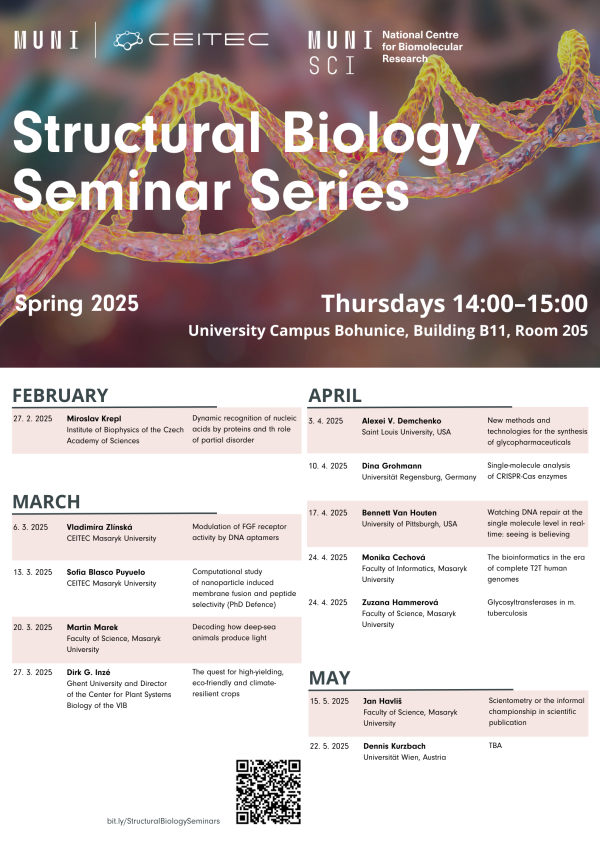About event
Over the past five years, we’ve focused on pushing the limits of NMR spectroscopy using hyperpolarization, especially with hyperpolarized water, to dramatically boost signal strength. This has allowed us to detect proteins at much lower, more physiologically relevant concentrations and to follow how individual amino acids respond to changes in their environment within seconds. We've used these tools to study how flexible regions of proteins interact with DNA and how small molecules bind to receptors. At the same time, we’ve explored how minerals like calcium phosphate and silica begin to form. Using specially designed peptides and time-resolved spectroscopy, we’ve observed the early stages of crystallization—events that are usually too fast or too disordered to capture. Altogether, our work provides new ways to monitor molecular processes as they happen and offers insights into how biology builds complex materials from simple building blocks.
The lecture is part of the Structural Biology Seminar Series. PhD candidates, postdocs, and research group leaders from the structural biology field present their newest research results to the MUNI scientific community. Ideal space for knowledge sharing, networking and professional growth.



